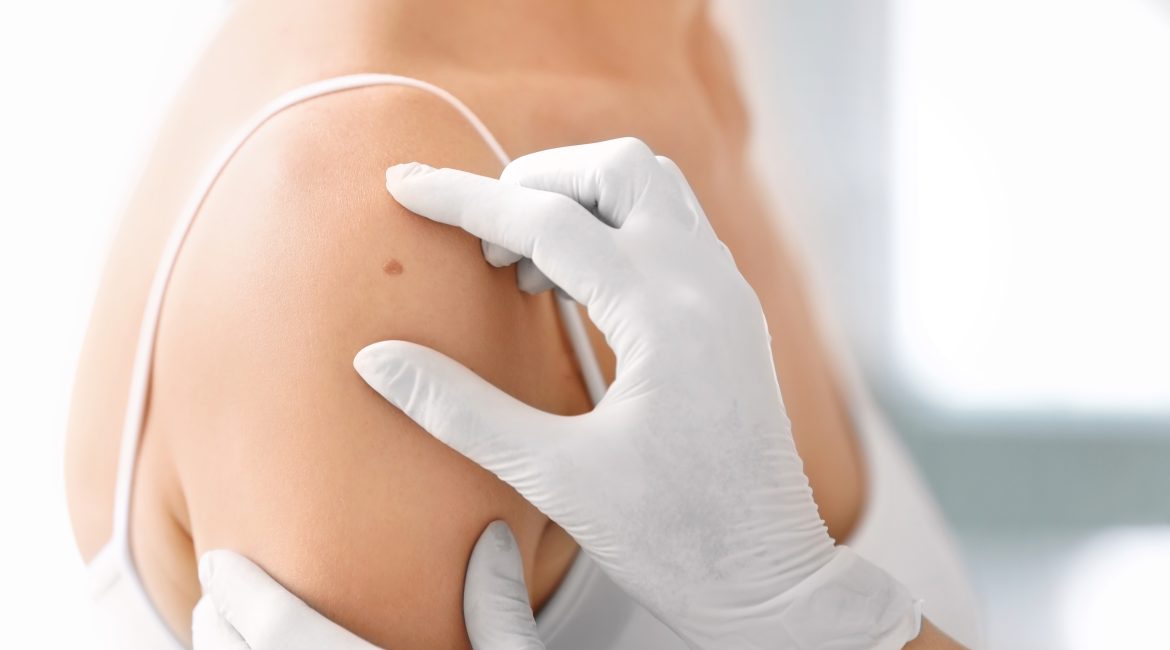Changes in moles can be a sign of skin cancer. We break down how to identify a cancerous mole in the early stages.
Finding a strange looking spot on your body can be pretty scary! Doctors recommend that you check your skin every month for signs of skin cancer and the more serious form of skin cancer, known as melanoma.
But how do you know whether a freckle or a mole is normal or abnormal? And what happens if you have a lot of moles on your body? Including the hard-to-see spots on your back or neck? Where do you start?
Related: Dread Disease Cover & Health Insurance: What You Need to Know
Of course, a doctor is the only one who can truly detect the cancerous looking moles. There are some things you can do at home to spot the dangerous spots. The best place to start is to understand that melanoma, and while it is more common in people with fair skin, it can happen to anyone! And not just those who have had spent a lot of time in the sun.
Here’s what to do:
How to Identify a Cancerous Mole: The ABCDEF Rule
This little trick is great to use in identifying moles, freckles, spots, and other skin blemishes on your body. Each letter represents a strange characteristic: asymmetry, border, colour, diameter, and evolution. There are some general signs to look out for – keep in mind that not all skin cancers have these specific traits, this is to serve as more of a guideline.
Asymmetry
Normal freckles or moles are completely symmetrical – meaning that they are uniform, this means that if you had to draw a straight line through the middle, both halves look the same. In some form of skin cancer, the spot will look different on both sides.
Border
The edges or borders of melanoma are often irregular, blurry or jagged.
Colour
Moles that normal are uniform in colour. Moles are seen as abnormal when they have more than one colour or have different shades of colour. These colour differences can include a darkening or lightening of the mole.
Discover: How to do a Breast Cancer Self Check
Diameter
If your mole is bigger than a pencil easier, which is about 6mm, then this is seen as abnormal. This also includes moles that don’t have any other notable abnormalities.
Elevation or Evolution
Elevation refers to a mole that is elevated or has variations in its height. Evolution refers to any changes in the symmetry, borders, colours, or diameter of an already existing mole.
Funny looking
This rule is not always included in mole examinations, but some doctors have begun to include it. It basically means that if your gut instinct thinks your mole looks strange, then you should get it checked. Especially if it is itchy or dry.
When to see a doctor
If you find a strange or abnormal-looking mole on your body, then try not to panic. Book an appointment with your doctor or dermatologist as soon as you can. It might turn out to be nothing at all, but it is always a good idea to get it checked out.
How to afford to see a private doctor
This is where health insurance comes in, especially health insurance that pays you BEFORE you see the doctor. Keep in mind that sun exposure is not the only cause for skin changes and abnormalities, even hormonal changes that take place during puberty can also cause changes in your skin, but these are typically harmless.
If you’re on a medical aid, read here to learn why GAP Cover is a good option.
If you are someone who has a lot of freckles or moles, then try to keep a digital photo album of all of them and update these each month.
Rather be safe than sorry when it comes to skin cancer, if your gut tells you to get something checked and you find a strange looking freckle or blemish, get it checked. Skin cancer is a serious condition and should be treated as such.
Your Health Insurance Family,
Oneplan




